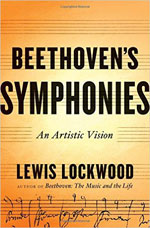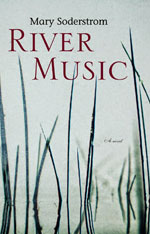Book Reviews by Rebecca Anne Clark & Kiersten van Vliet
/ February 1, 2016
 Beethoven’s Symphonies : An Artistic Vision Beethoven’s Symphonies : An Artistic Vision
Lewis Lockwood.
New York and London : W.W. Norton & Co., 2015. xvi, 285 pages
ISBN : 978-0-393-07644-8.

The latest from the Pulitzer Prize finalistauthor for Beethoven : The Music and the Life (2003), is a compelling guide to the composer’s nine symphonies.
In the preface, Lockwood aptly states, “A new book on the Beethoven Symphonies calls for justification,” (p. xiii). Indeed, with the breadth of material on Beethoven, it is difficult to imagine where one may find a foothold; however, Lockwood seems to have found his niche. In his survey, Lockwood, the leading American authority on Beethoven, returns to source material to trace the evolution of ideas into symphonies.
Divided into nine chapters – one for each symphony – the weight of the book is on the usual suspects : The Third, Fifth, and Ninth. Even so, Lockwood has some surprising insights on the symphonies that are often left in shadow, including the French influence on the Second, and Beethoven’s broadening stylistic directions in the Eighth.
If the narrative of Beethoven’s Symphonies is largely the same, it is perhaps a case for the accuracy of the scholarship – or the potency of the story. But, unlike his subject, originality was never Lockwood’s goal; the various sketchbook entries for incomplete symphonies “combine to justify the view that for Beethoven the symphony was a lifetime preoccupation,” (p. xv). Throughout the book, the biographical detail serves the discussion of the music rather than the reverse, never outweighing nor overshadowing the music itself.
Sketch studies have the “capacity to create links between history, biography, and analysis,” (p. xiv) and create a window into Beethoven’s creative process. You do not need to be a Beethoven enthusiast to enjoy Beethoven’s Symphonies; light on musical examples and musicological jargon, Lockwood paints an engaging and accessible portrait of the repertoire. KVV
 River Music River Music
Mary Soderstrom
Cormorant Books, 276 pages

River Music, the sixth novel from Montréaler Mary Soderstrom, follows the life of Gloria, a pianist who struggles to make her way as a female musician in mid-20th-century Montréal. From early childhood, Gloria learns how the “river of music” can carry her away from a life fraught with troubles, but that same river will lead her to much struggle and even disappointment as she must fight for opportunities to realize her musical potential. While music remains important throughout Gloria’s life, its raw power increasingly takes a back seat to her career and her relationships : the lover who connects with her, the supporters who feel entitled to a piece of her, the daughter who dismisses her accomplishments. Gloria’s course reflects the enormous changes that were taking place in Montréal as it became a cultural centre and a bustling metropolis; her story illustrates the considerable challenges faced by musicians and by women in this time and place. While some might characterize her as cold, Gloria is a rare heroine (or perhaps antiheroine), unapologetic about her ambition and lack of sentimentality. Gloria shatters the myth of the “sensitive artist” to reveal the truth about the importance of hard work and especially sacrifice to artistic pursuits. The narrative’s pacing is languid – more adagio than allegro. Unfortunately, there are some gaps in an otherwise fascinating historical landscape. Nevertheless, I recommend River Music for anyone interested in Montréal, its history, and its musical culture in the twentieth century. RAC | |

